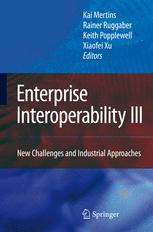

Most ebook files are in PDF format, so you can easily read them using various software such as Foxit Reader or directly on the Google Chrome browser.
Some ebook files are released by publishers in other formats such as .awz, .mobi, .epub, .fb2, etc. You may need to install specific software to read these formats on mobile/PC, such as Calibre.
Please read the tutorial at this link: https://ebookbell.com/faq
We offer FREE conversion to the popular formats you request; however, this may take some time. Therefore, right after payment, please email us, and we will try to provide the service as quickly as possible.
For some exceptional file formats or broken links (if any), please refrain from opening any disputes. Instead, email us first, and we will try to assist within a maximum of 6 hours.
EbookBell Team

4.3
28 reviewsIn the context of enterprise applications, interoperability is the ability of a system or an organisation to work seamlessly with other systems or organisations without any special effort. This ability to interact and exchange information both internally and with external organisations (partners, suppliers and/or customers) is a key issue in the global economy. It is fundamental to the acceleration of the production of goods and services at lower cost at the same time as ensuring higher levels of quality and customisation. Despite the last decade’s many efforts to overcome interoperability barriers in industry, non-interoperability still causes an enormous cost for all business partners. Studies show that more than 40% of IT costs are devoted to the solution of interoperability problems. This book provides knowledge for cost savings and business improvement as well as new technical solutions.
Composed of over 50 papers, Enterprise Interoperability III ranges from academic research through case studies to industrial and administrative experience of interoperability. The international nature of the authorship continues to broaden. Many of the papers have examples and illustrations calculated to deepen understanding and generate new ideas.
The I-ESA’08 conference from which this book is drawn was sponsored by the Interop-VLab and the Enterprise Interoperability Center (EIC). It is also supported by the International Federation for Information Processing and various national associations.
A concise reference to the state of the art in software interoperability, Enterprise Interoperability III will be of great value to engineers and computer scientists working in manufacturing and other process industries and to software engineers and electronic and manufacturing engineers working in the academic environment.